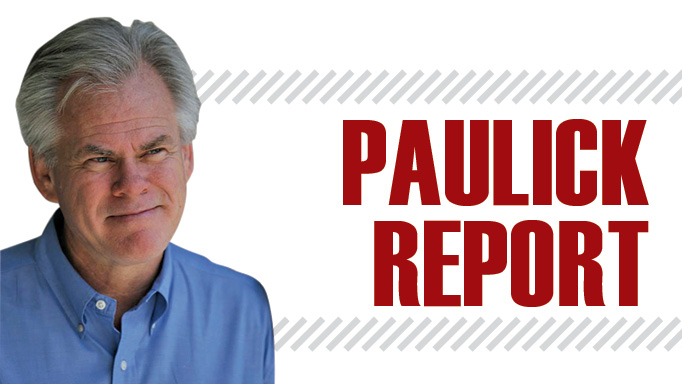The $12 million Pegasus World Cup was described by many as a revolutionary idea from the mind of Frank Stronach because the purse was funded by individuals or partnerships that were willing to pay $1 million each for a guaranteed spot in the starting gate for what was being billed as the world’s richest horse race.
It’s true that some elements of the Pegasus World Cup were unique. Most notably was the ability of investors to sell or barter their starting gate position with the owner of another horse.
But horse owners have been funding purses, directly or indirectly, for a long time.
For starters, let’s take an overview of horse racing economics.
In 2016, there was just over $1 billion in purse money distributed in the United States in 38,284 races, according to Equibase. Owners of the horses that made nearly 300,000 starts during the year received, on average, $3,627 per start. Horses are making just over six starts per year now, so that means each horse earns about $22,500 per year. It costs a lot more – in boarding, training and veterinary services – to keep a horse in training for a year.
The generally accepted number is that North American horse owners spend $2 billion annually to chase about $1 billion in purses. Almost any horse owner will tell you they didn’t get into the game to make money. They are indirectly subsidizing racing through their investment.
As for owners putting up money for purses, let’s take a look at America’s most famous horse race, the Kentucky Derby. Owners of 418 horses recently put up $600 each to make their 3-year-olds eligible for this year’s Triple Crown races. It will cost $25,000 to enter the Kentucky Derby and another $25,000 to start. Presuming a full gate of 20 runners, that’s $1 million in entry and starting fees (plus Churchill Downs will get a share of the $250,800 in early nomination fees). The Derby’s purse is $2 million, so more than half of the prize money is being put up by owners.
When the Breeders’ Cup was created more than 30 years ago, nearly all of the $10 million awarded in the seven championship races in the inaugural running in 1984 was raised by breeders and owners. Breeders paid a nomination fee to make their foals eligible for the program (provided they were sired by stallions whose owners annually paid an amount equal to a live foal stud fee) and owners put up fees to enter and race. It took years of growth in simulcasting for wagering on the event to become a significant revenue source.
Quarter Horse racing’s biggest event, the All American Futurity at Ruidoso Downs in New Mexico, may be the granddaddy of them all among big events funded by breeders and owners. Inaugurated in 1959 and modeled after the Central Bar & Grill Futurity (a race designed to promote an illegal casino at a local watering hole), the All American now boasts a $2.4 million purse, with just $75,000 coming from the racetrack in added money. The rest is supplied by nominations and sustaining payments.
What makes the Pegasus World Cup different is the opportunity for the 12 shareholders to share in wagering revenue. The Florida Horsemen’s Benevolent and Protective Association signed off on the formula, which diverted wagering revenue to the 12 investors. The FHBPA members benefited through increased handle on the other 11 races run that day.
Gulfstream Park gave up its traditional share of handle on the Pegasus World Cup, knowing that it, too, would benefit from increased wagering on the other races. Gulfstream Park also charged premium ticket prices, though officials said revenue from those sources fell short of what was spent to market and put on what truly was a first-class event for this first year.
There was roughly $16 million wagered on the Pegasus World Cup, including on-track, simulcast facilities and advance deposit wagering. If the blended revenue from those sources was 10 percent, Gulfstream Park had about $1.6 million to distribute among the 12 shareholders. If the event grows in subsequent years and the business model remains as is, those putting up $1 million will have a much better chance of recouping their investment, even if their horse doesn’t win.
“Almost any horse owner will tell you they didn’t get into the game to make money. They are indirectly subsidizing racing through their investment.”


